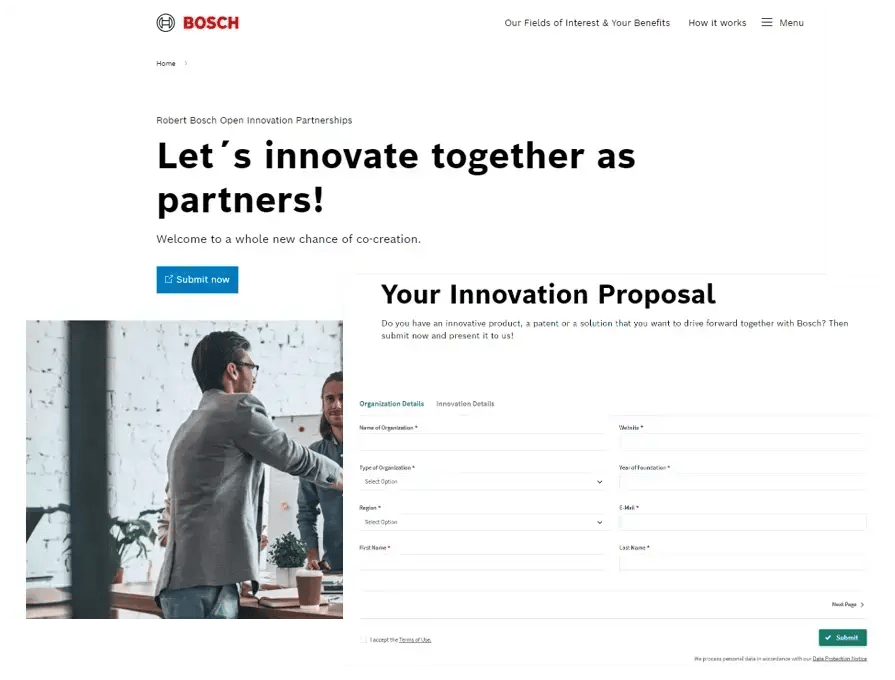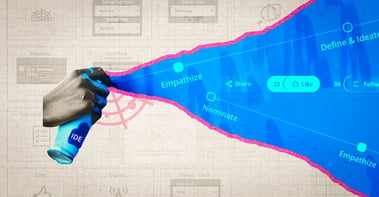Coming up with great product ideas is harder than it sounds. The market is crowded. Customers have high expectations. And competition moves fast.
But the right strategies make idea generation easier. You don’t need to guess what your target audience wants. You can create better product ideas with the right tools, feedback, and structure.
This article covers eight proven strategies. You’ll learn how to use customer feedback, market research, and emerging technologies. Each method helps you move from a raw concept to a real solution.
Whether you’re in an e-commerce business, B2B, or launching tech products, these strategies work.
The growing need for innovative products across industries
Trends shift quickly. Consumer behavior changes fast. Companies that rely on existing products risk falling behind. They lose attention. And they lose market share.
Businesses across all sectors—from cell phones to online marketplaces—need fresh product ideas. These ideas should solve real problems, appeal to a clear target market, and respond to current demand.
There is high demand for products that are simple, digital, sustainable, and user-friendly. Winning product ideas tick all four boxes.
The benefits of effective new product idea generation
Great new products help you attract new potential customers and stand out in your market.
Effective ideation brings clarity to what you should build. It shows what people actually want. It gives your team direction.
It also helps you build better business models. You can create a minimum viable product (MVP) faster. And you waste less time and money.
Early validated thoughts are also easier to sell online. They connect with people’s needs and wishes. That’s key to building a strong marketing strategy.
The challenges of effective new product idea generation
Not all product ideas are good. Some don’t meet client needs. Some don’t fit the business model. Others are too expensive to build or hard to explain.
Another challenge is validation. Without market testing, it’s hard to know which features are worth pursuing. You need to evaluate new concepts based on feasibility and demand without having hard evidence. Yet, a great new offering without a real target audience will fail.
But with the right frameworks, you can avoid these traps.
The eight proven new product idea development strategies
Generating great product ideas isn’t luck. It is structure.
You need a process to go from vague thoughts to market adoption. The following eight strategies help you build new product ideas with focus and direction.
They work across industries. Whether you’re building new devices, launching an e-commerce business, or creating sustainable products—these methods can guide your ideation process.
Developing new product ideas from customer insights
Great new solutions often start with listening. Collecting feedback is a direct link to your market. It shows you what’s working—and where users struggle. That’s where product opportunities live.
When users share complaints, they’re highlighting their concerns and struggles. Each one can spark a new product idea or improve an existing product. Feedback also reveals patterns. If multiple buyers mention the same issue, take note. There’s likely high demand for a better solution.
Collecting feedback isn’t just a post-launch activity. It should guide your entire development cycle—from early thought to final product.
Start every process with your target market in mind. Ask the right questions. Listen to the right voices. And don’t guess.
Why customer feedback is your most powerful product compass
Your customers use your products every day. They see what you miss.
Their insights go beyond surface-level features. They reflect lived experiences. They reveal what actually delivers value—and what doesn’t.
Customer feedback helps you make smarter decisions. It narrows the gap between assumptions and reality. You stop building what you think people want and start creating what they actually need.
It also builds trust. When customers see their feedback turned into real change, they’re more loyal.
How to collect actionable customer feedback
Not all feedback is useful. You need the right methods.
Start by asking targeted questions. Focus on behaviors, use cases, and product experience. Don’t ask vague questions. Ask about specific situations.
Use email surveys, on-site prompts, or user interviews. Tools like NPS help track satisfaction over time. Open-ended questions reveal deeper insights.
Look at product reviews. Monitor support tickets. Read comments on social channels. Directly reported insights shows where friction lives.
Segment responses by target audience. What’s critical to one group may not matter to another. Your ideal product solves the right problem for the right people.
Turning pain points into product ideas
Pain points are gold.
They expose where current products fail. That includes your own or your competitors’. If customers are frustrated, they’re ready to switch—if you offer something better.
Every problem leads directly to an opportunity. Your job is to understand the root cause. What’s missing? What’s clunky? What slows users down?

Map each problem to potential features. Test if fixing that issue would lead to more usage, selling products more often, or better retention.
Use this to develop minimum viable products. Keep it simple. Focus on solving one key frustration well.
Co-creating products with customers and communities
Want better insights? Build with—not just for—your audience.
Co-creation brings customers into your product development process. Invite them to submit product ideas. Ask them to test early concepts. Run ideation workshops with loyal users.
This builds engagement. It also creates more relevant business ideas. Customers know what they want. Sometimes, they just need a space to share.
Use submission portals to collect them at scale. Let users vote on features. Involve communities in naming or design. This turns feedback into collaboration.
It also improves your product launch. When users help create the product, they’re more likely to support and promote it.
Using market research
Market insights help you make better decisions. It shows what customers want and what competitors miss. Without it, you risk building something no one needs.

It’s your compass in product development. It reveals what features matter, which products are trending, and what pain points still need solving.
Educated and comprehensive research leads to stronger product ideas.
Primary vs. secondary research
There are two types of market research: primary and secondary.
Primary research is original. You gather it yourself through surveys, interviews, or direct observation. It’s specific and targeted to your product concept, new features, or business idea.
This type helps you test assumptions. It gives real-time feedback from your target audience. If you sell online or build new devices, primary research tells you how your thinking fits actual needs.
Secondary research uses existing data. You pull insights from reports, blog posts, or industry publications. It’s faster and often broader.
It helps you understand larger trends. It’s especially useful when analyzing technological advancements, product categories, or new technologies.
Use both. Start with secondary research to map the landscape. Then use primary research to dig into specifics.
Common traits of high-demand products
High-demand products solve real problems. They offer clear benefits and are easy to explain. They also stand out in crowded markets.
These products align with current consumer interests. Think eco friendly packaging, eco friendly products, wireless earbuds, smart lighting, face masks, or health-focused wearables. They tap into emotional and practical needs.
They often reflect shifts in lifestyle—busy professionals needing time-saving tools, or families seeking safer home environments.
What else do they share? Good timing. Good price. And a marketing strategy that speaks directly to their audience.
Use market research to identify these traits. Then shape your product idea around them.
How to spot gaps and unmet needs in the market
Every market has blind spots.
Some customers don’t feel heard. Others use products in ways they weren’t designed for. These are signs of unmet needs—and great opportunities.
Use surveys to ask what people wish existed. Monitor online reviews and support forums. Look for complaints about current offerings.
Track low-rated features. Pay attention to air quality issues, quality concerns, or limited options. These may hint at better product concepts.
New technologies also create new gaps. As they advance, needs evolve. Stay alert.
Market gaps are your chance to create something that truly stands out—and sells.
Run structured ideation workshops
Idea workshops help teams create with purpose. They take the guesswork out. And they speed up how you develop products.
Workshops give space to explore customer needs, market shifts, and business goals. They also help find concepts that match real-world constraints.
A structured format is key. It prevents groupthink and helps every voice get heard.
Best practices for productive brainstorming sessions
A good starting point is a clear goal. Are you solving a specific problem or exploring broad opportunities?
Use warm-up exercises to boost energy. Set time limits for each round. Keep groups small to encourage participation.
Focus on volume first. You can evaluate with other metrics, like feasibility or market fit, after the session.
Mix roles and departments. A finance lead may spot risks others miss. A marketer may bring a new angle to customer needs.
Document everything. Use templates to streamline tracking and link them to business or customer value.
Crowdsourcing and open innovation
The best new thoughts don’t always come from inside the company. Crowdsourcing taps into external perspectives—customers, partners, and even competitors. It broadens your pool of insights and challenges bias.

Define the scope clearly. What kind of idea are you looking for? A feature? A new product? A way for your service to improve market relationships? Offer a simple submission form. Make the process transparent. And give credit where it’s due.
Open innovation helps you find excellent product ideas that lead to real success. It’s how leading companies achieve success in competitive markets.
Study innovative products across industries
Study how leading brands develop innovative products. Look at what made them stand out. What customer problem did they solve? What new value did they create?
Explore different product categories—from smart lighting to eco friendly packaging. These can reveal patterns you can apply to your own market.
Track how companies launched these products. Which channels worked? Which features grabbed attention?
You don’t need to copy. You need to translate the purpose into something that fits your customer.
How to collect and apply analogies from other contexts
Analogies are a powerful tool. Let’s say a fitness app uses real time data to personalize workouts. Could a smart home device use a similar method for energy savings?
Or consider how busy professionals use self-care services. Could that inspire new product concepts for medical devices or air quality solutions?
Collect analogies by scanning startup platforms, innovation databases, or trend reports. Focus on trending items and technological advancements.
Then, adapt those examples to your product or service.
Mapping competitor moves
Your competitors leave signals. Track them. Analyze their product launches, feature updates, and pricing shifts. What trending products are they testing? What seems to be working?
Use KPIs to spot patterns. Check sales rank, reviews, and market gaps. Which pain points are still unsolved? Benchmark against competitors, but go beyond imitation. Innovate where they stagnate. Find a better angle or a new use case.
Studying your competition isn’t about catching up. It’s about leaping ahead—with trending products.
Tapping into emerging technologies for next-gen products
New technologies unlock entirely new product categories. They open fresh ways to solve customer problems.
AI, augmented reality, and real-time data are reshaping how businesses develop products. From smart home devices to medical treatments, the number of examples and pace of change are accelerating.
Companies that act early gain a competitive edge. They create better customer experiences and win more potential customers. These technologies are not just trending topics. They are tools for growth.

AI and automation tools for idea collection
Too many product teams struggle to manage idea overload. AI helps sort signal from noise.
AI tools collect ideas from many sources—just a few examples: support tickets, customer reviews, internal notes, and market data. They group them by topic, urgency, or popularity.
Automation speeds up the collection process. It also reduces human error and bias. Your team can focus on evaluating strategic fit and future product offerings.
These tools not only support ecommerce businesses, B2B service providers, and digital product teams, but they also simplify early-stage ideation and boost sales.
AI-powered trend scanning
AI makes trend research smarter and faster.
Instead of manually reviewing hundreds of articles or reports, AI scans vast amounts of real-time data. It identifies patterns. It spots emerging consumer interests and market shifts early.
Use it to monitor product launches, tech news, and social media signals. Combine this with internal data to understand where your customers are heading next and improve your marketing strategy.
AI-powered trend scanning is a great example that helps you stay ahead of your market, not just react to it.
Combining AI and human creativity in the ideation phase
The best product ideas come when AI and human creativity work together. Let AI suggest starting points. For example, a new format to sell online outdoor activities to family members. Let your team develop and refine them.
AI might suggest trending products and trending items. Your product management decides what fits your audience, your business, and your brand.
Use AI to test assumptions, model market scenarios, or simulate user feedback. Then bring in your creative team to generate ideas that resonate emotionally.
Together, you’ll move from gaining insights to selling products.
Test desirability, feasibility, and viability in early experiments
Early experiments help reduce risk. They show if your product idea can succeed before you commit full resources.
Use fast tests to validate each part of your product concept. Focus on three key areas: desirability, feasibility, and viability.

This is the foundation of smart product development.
Applying the desirability–feasibility–viability framework
Desirability asks: Do customers actually want this?
Test this by showing the concept to real users. Collect feedback through landing pages, surveys, or interview sessions. Look for signals like email signups or click-throughs.
Feasibility checks: Can we build this with our current team, tech, or partners?
Run technical prototypes or small-scale trials. Focus on the hardest parts first.
Viability means: Will this be profitable? Will it fit our business model?
Use pricing tests, business case simulations, or sales mock-ups. Identify your cost drivers early.
This three-part framework keeps your ideation grounded in reality.
NPS, average order value, burn rate, and other metrics for validation
Track real numbers—not just opinions.
Use Net Promoter Score (NPS) to measure how likely customers are to recommend your concept. Average order value helps show if customers see enough value to pay. Burn rate tells you how long you can test before running out of budget. Don’t overbuild. Keep your tests lean.
Other KPIs like usage frequency, churn risk, or customer acquisition cost also help.
Choose the right performance metrics based on your product category and launch goals.
Measure early. Learn fast. Then build what works.
Detail product idea implementation plans
Too many great thoughts fail because they lack structure and clear execution plans or are not budget friendly. The transition from concept to execution is where momentum often fades.
A well-structured plan creates focus. It defines what will be built, who will build it, and how success will be measured.
The process doesn’t stop with generating ideas. The real challenge is developing, delivering, and scaling them.
With the right roadmap, ownership, and focus on metrics, your best business ideas can become your biggest successes.
Building a clear product development roadmap
Your product development roadmap is your guide. It turns a raw thought into action steps across time.
Start by outlining major milestones—concept testing, MVP launch, user feedback, and full release.
Break the roadmap into phases. Keep the early stages lean. Focus on building fast and learning fast.
Each phase should include clear goals and deliverables. This helps teams stay aligned and track progress.
Roadmaps must be adaptable. Markets change. Customers evolve. Your roadmap should evolve, too.
Use it as a living document that reflects current strategy, not a static plan.
Linking product ideas to strategic goals and resources
Every idea should support your broader business goals. If it doesn’t, it’s a distraction.
Link each of them to a strategic theme: customer growth, operational efficiency, or brand differentiation.
Check alignment early. Does it solve a priority customer problem? Will it move key metrics?
Then review resource needs. What tech, skills, or budget will it require?
This prevents overcommitting to what you can’t realistically deliver.
Only invest when they fit both your strategy and capacity.
Assigning owners, timelines, and success metrics
Every idea in development needs a clear owner—someone responsible for driving it forward.
Assign timelines with reasonable buffers. Add review checkpoints to evaluate progress.
Define success using measurable outcomes. These could include, for example:
-
NPS improvement
-
Trial-to-paid conversion
-
Reduced service tickets
-
On-time delivery
Choose performance metrics that match the idea’s purpose and product management process.
Make success visible. Share progress with stakeholders. This builds support and accountability.
Avoiding idea stagnation with execution accountability
Execution is where ideas go to thrive—or die.
Many product ideas lose momentum after the excitement fades. They get buried under daily work or other priorities.
Avoid this by building accountability into every step.
Set regular check-ins. Track performance. Remove blockers quickly.
If an idea underperforms, pivot or stop. Don’t waste resources on something that won’t deliver.
If an idea shows traction, double down. Allocate more resources. Speed up development.
Make it easy for teams to say what’s working—and what’s not.
Helpful New Product Development Toolkit
Developing a new product idea takes more than creativity. You need tools to guide, structure, and accelerate your process.
This toolkit includes proven methods, templates, and platforms to help you move from idea to launch with confidence.
Use these tools to build better products, faster.
Idea submission and evaluation boards
Start by collecting and organizing your product ideas. Use digital boards that capture ideas from your team, partners, or customers.

Make it easy for contributors to submit ideas. Include fields for pain points, target market, and potential features.
Use evaluation templates to rank each idea. Score them based on customer value, business impact, and ease of development.
This helps you filter strong ideas from the rest.
Customer insight tools
Use survey tools, user interviews, and in-app feedback widgets to learn what your customers want. Focus on pain points, unmet needs, and feature requests.
Turn feedback into structured insights. Use tagging and filters to sort by urgency or customer segment.
This ensures you develop solutions that actually matter.
Product roadmap templates
Every product needs a plan. Use interactive roadmaps to define what happens, when.
Break the process into phases: research, concept testing, MVP, launch, and post-launch iteration.
Assign timelines, team leads, and KPIs to each stage.

Use visuals to communicate your roadmap internally. This helps stakeholders stay aligned and track progress over time.
Business case calculators
Not all ideas are worth the investment. A good business case shows why your idea matters.
Use simple templates to estimate development cost, time to market, and expected returns.
Include customer acquisition costs, pricing assumptions, and break-even points. Add potential risks and mitigation strategies.
This makes it easier to compare product ideas and focus on those with the best potential for success.
Desirability–feasibility–viability matrix
Use this classic tool to screen product ideas.
Plot each idea on a matrix:
-
Desirable: Does it solve a real customer problem?
-
Feasible: Can your team build it with current resources?
-
Viable: Can it generate profit?
Ideas that score well on all three axes are your strongest bets. This method keeps your pipeline realistic and strategic.
Performance and success metrics dashboards
Track what matters, not just what’s easy to measure.
Use dashboards to monitor key performance metrics like NPS, conversion rates, or retention.
Set thresholds for each phase. This helps you decide when to invest more, or when to stop.
Link each metric to business goals and team accountability.
Trend databases
Get inspired by what’s already out there. Use innovation platforms and trend radars to scan for new product ideas, market shifts, or emerging technologies.
Track what other industries are creating. Look at how start-ups are solving customer problems. Spot trends early.
Use this input to create better, more relevant solutions.
Collaboration and project management tools
Execution takes teamwork.
Use a single platform to keep teams aligned. Assign tasks, set deadlines, and track deliverables.
Collaboration tools reduce confusion and keep your product development process moving smoothly.
Document everything in one place. This ensures continuity, even if team members change.
Project management software simplifies the journey from brainstorming to execution, helping organizations efficiently organize tasks, track progress, and align efforts with business goals.
These platforms empower teams to systematically identify, develop, and deploy breakthrough ideas while ensuring transparency and accountability at every stage of the process.
Collect your next-best product idea. Today.
The ITONICS Innovation OS is the best idea management software, enabling an effective ideation process. With ITONICS, you will get the best to develop ideas, gather ideas, and implement ideas in one intuitive platform.

Collect all ideas in one place: Run ideation campaigns with your team, a specific community, or the whole organization. Process ideas on one collaborative idea management software, ensuring no idea gets lost. Reduce effort with features that detect duplicates and connect ideas to strategic priorities.
Crowdsource from your external network: Use the ITONICS submission portal to receive proposals from start-ups, universities, or customers. Define your challenge and idea submission form, embed them on a webpage, and get submissions into your ITONICS platform. Let the ideas flow into an evaluation workflow, then select the best for partnerships.
Gain inspiration and efficiency from AI: Don’t panic when you have too many or too few ideas. Use the ITONICS idea management software to seed and enrich initial concepts worth pursuing with the help of Generative AI. Save time by automatically rating a pool of ideas based on selected criteria.







/PostFinance_Innovation-Process-update-1009-2024.webp?width=864&height=548&name=PostFinance_Innovation-Process-update-1009-2024.webp)





